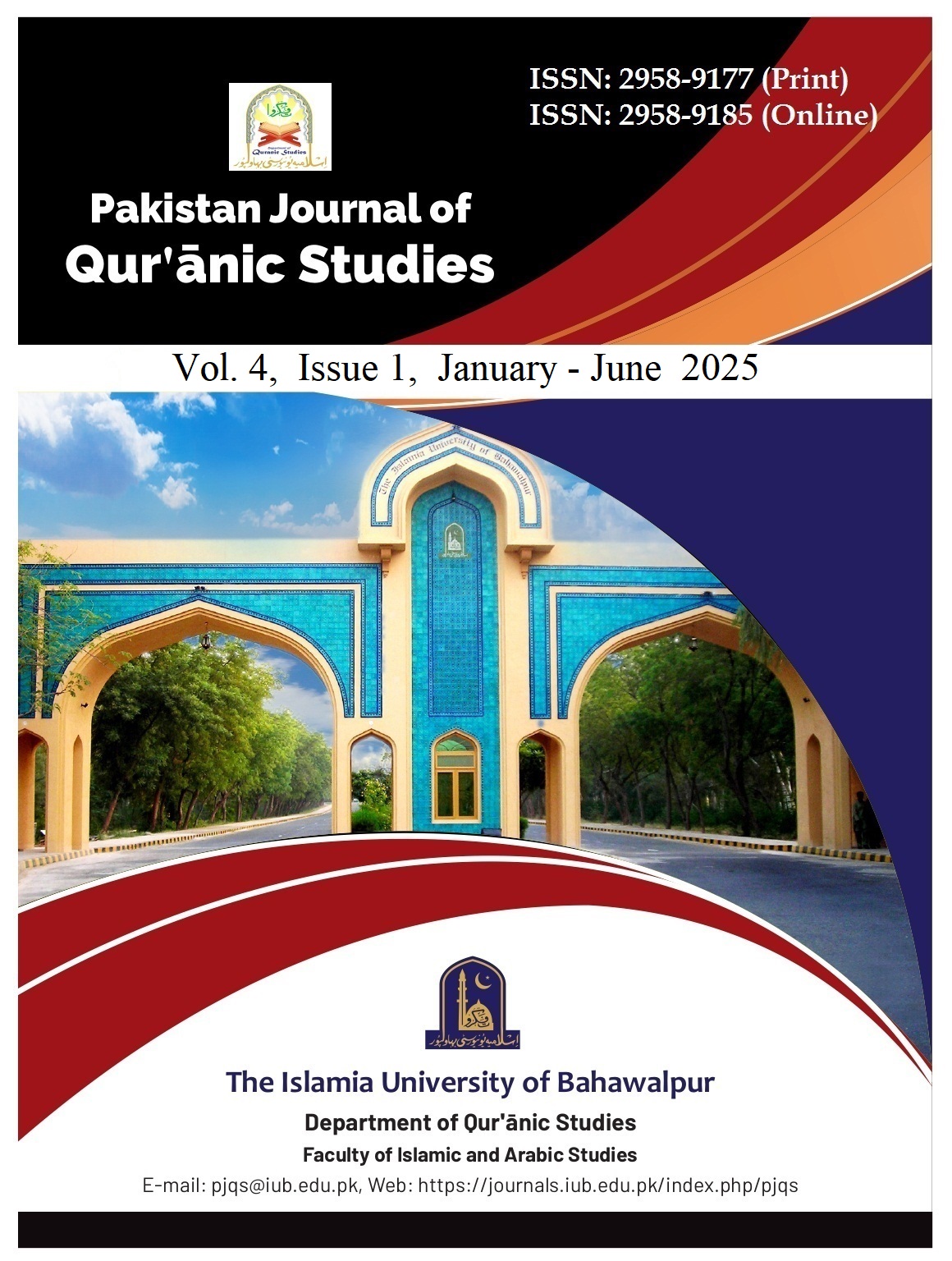الشمس في القرآن من نور الخلق إلى برهان الحق
The Sun in the Qur’ān from the Radiance of Creation to the Manifestation of Truth
Keywords:
Muslim Ummah, socio-psychological issues, cultural challenges, Holy Qur’ān, Prophet Muhammad (PBUH)Abstract
Between the dawn that flows from the horizon of creation and the setting that descends into the depths of reflection, the sun in the Holy Qur’an emerges not as a mere celestial body, but as a speaking sign, a submissive creature, and a wise witness to the greatness and oneness of the Creator.Throughout the Qur’anic discourse, the sun appears as a rational argument in the dialogue of monotheism, a timekeeper for worship, a symbol in prophetic visions, a feature in miraculous narratives, a false deity among the misguided, and finally a devout being in cosmic submission to God.Through this thematic and rhetorical journey, it becomes clear that the sun in the Qur’an is not merely a source of visible light, but a mirror reflecting the light of truth, a tongue articulating divine unity, and a bridge between the physical and symbolic, nature and revelation,
reason and heart.The Qur’an portrayed it masterfully. The hoopoe bird denounced its worship. Abraham refuted its divinity. Joseph interpreted it as a celestial symbol. And God, its Creator, subjected it to His command.Thus, the sun transformed from being idolized to being a servant, from a deity to a proof, from a radiance to a revelationuntil it became, in the eyes of the believer, a language of devotion that bows at every sunset and illuminates the path of tawḥīd (monotheism) for hearts granted divine insight.
Downloads
Published
How to Cite
Issue
Section
License
Copyright (c) 2025 Dr. Yasmeen Akhtar, Dr. Qasim Azzam Bhutta

This work is licensed under a Creative Commons Attribution-NonCommercial 4.0 International License.
You are free to:
• Share: copy and redistribute the material in any medium or format.
• Adapt: remix, transform, and build upon the material.
• Attribution: You must give appropriate credit, provide a link to the license, and indicate if changes were made. You may do so in any reasonable manner, but not in any way that suggests the licensor endorses you or your use.
• NonCommercial: You may not use the material for commercial purposes.
• No additional restrictions: You may not apply legal terms or technological measures, that legally restrict others from doing anything the license permits








